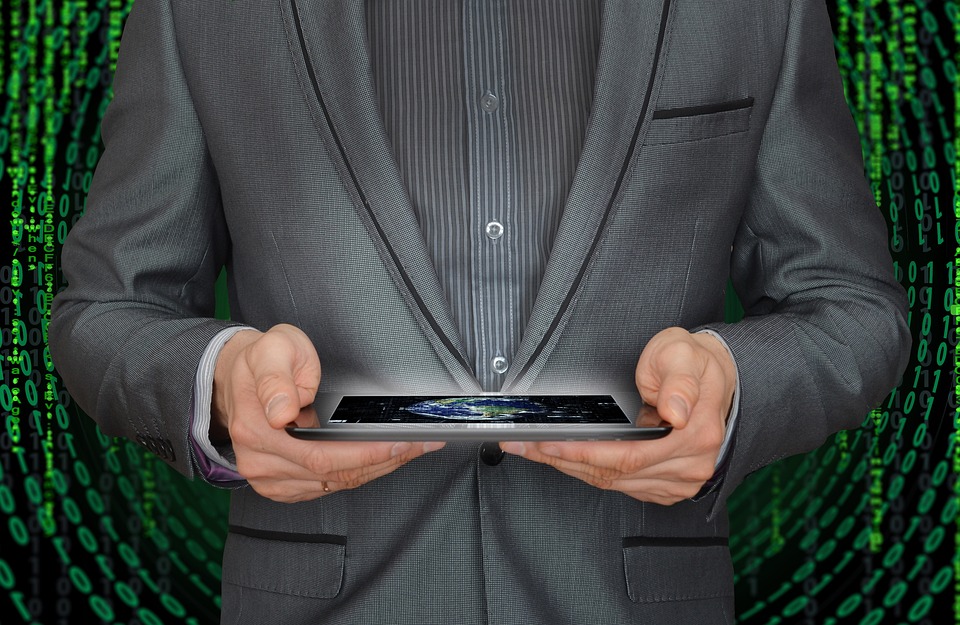Community and Social Impact
Success Stories and Profiles

Introduction
Social innovation initiatives have been transforming lives and communities around the world. These innovative solutions are tackling some of the most pressing social and environmental challenges, from poverty and inequality to climate change and access to education. In this article, we’ll explore some inspiring success stories and profiles of individuals and organizations making a positive impact.
Success Stories
1. The Grameen Bank: Empowering Women Through Microfinance
The Grameen Bank, founded by Muhammad Yunus, has been a pioneer in microfinance, providing small loans to millions of women in rural Bangladesh. The bank’s innovative approach has enabled women to start their own businesses, improving their economic stability and social status. Today, the Grameen Bank has over 9 million borrowers, with a repayment rate of over 98%.
2. The One Laptop Per Child Initiative: Bridging the Digital Divide
The One Laptop Per Child (OLPC) initiative aimed to provide low-cost laptops to children in developing countries. The project, launched in 2005, has distributed over 3 million laptops, empowering children to access education and connect with the world. The initiative has also sparked a global movement, inspiring other organizations to adopt similar projects.
3. The Malala Fund: Education for All
The Malala Fund, founded by Malala Yousafzai and Ziauddin Yousafzai, is a non-profit organization dedicated to providing education to girls in countries where it is denied or difficult to access. The organization has supported over 100,000 girls in getting an education, and has worked with governments and local communities to create a safer and more supportive environment for girls to learn.
Profiles
1. Muhammad Yunus: The Father of Microfinance
Muhammad Yunus, a Bangladeshi economist and Nobel laureate, is the founder of the Grameen Bank. He is widely recognized as the pioneer of microfinance, and has been a driving force behind the global movement to provide financial services to the poor. Yunus has received numerous awards for his work, including the Nobel Peace Prize in 2006.
2. Malala Yousafzai: The Girl Who Defied the Taliban
Malala Yousafzai, a Pakistani activist for girls’ education, was shot by the Taliban in 2012 for speaking out against their efforts to ban girls from attending school. Despite the attempt on her life, Malala continued to advocate for girls’ education, and was awarded the Nobel Peace Prize in 2014. She is now a global symbol of courage and resilience.
3. Wangari Maathai: The Environmental Activist
Wangari Maathai, a Kenyan environmental activist, was the first African woman to win the Nobel Peace Prize, in 2004. She founded the Green Belt Movement, which aimed to empower communities to take charge of their environment and promote sustainable development. Maathai’s work has inspired a global movement, and has helped to plant over 50 million trees in Africa.
Conclusion
These success stories and profiles demonstrate the power of social innovation initiatives to transform lives and communities. From microfinance to education, and from environmental activism to digital inclusion, these initiatives are tackling some of the most pressing challenges facing our world today. As we look to the future, it is clear that social innovation will continue to play a critical role in creating a more just, equitable, and sustainable world.
FAQs
Q: What is social innovation?
A: Social innovation refers to the development and implementation of new and innovative solutions to social and environmental challenges.
Q: How can I get involved in social innovation initiatives?
A: There are many ways to get involved, from volunteering with local organizations to supporting social enterprises through crowdfunding or donations.
Q: What are some examples of successful social innovation initiatives?
A: Some examples include the Grameen Bank, the One Laptop Per Child initiative, and the Malala Fund, among many others.
Q: How can I stay up-to-date with the latest social innovation initiatives?
A: You can stay up-to-date by following social media accounts, attending conferences and events, and subscribing to newsletters and publications focused on social innovation.
Community and Social Impact
Case study: A social enterprise that addresses systemic issues and promotes social justice.

Social entrepreneurship case studies have become increasingly important in addressing systemic issues and promoting social justice. Through innovative solutions and dedication, social enterprises can drive meaningful change and improve the lives of individuals and communities. In this article, we will explore a case study of a social enterprise that has made a significant impact in addressing systemic issues and promoting social justice.
Background and Context
The social enterprise we will be discussing is the TOMS company, founded by Blake Mycoskie in 2006. TOMS is a shoe company that has pioneered the “one-for-one” model, where for every pair of shoes sold, a pair is donated to a child in need. This model has not only provided shoes to millions of children worldwide but has also raised awareness about the importance of access to education and healthcare.
The Problem: Lack of Access to Education and Healthcare
In many developing countries, children lack access to basic necessities like shoes, which can lead to a range of health problems and hinder their ability to attend school. This is a systemic issue that perpetuates poverty and inequality. TOMS recognized this problem and created a solution that not only provides shoes but also supports education and healthcare initiatives.
The Solution: One-for-One Model
The one-for-one model is simple yet effective. For every pair of shoes sold, TOMS donates a pair to a child in need. This model has been successful in providing shoes to over 95 million children worldwide. Additionally, TOMS has expanded its model to include other products, such as eyewear and coffee, with similar one-for-one donations.
Impact and Outcomes
The impact of TOMS’ one-for-one model has been significant. Not only has it provided shoes to millions of children, but it has also raised awareness about the importance of access to education and healthcare. TOMS has also partnered with other organizations to support education and healthcare initiatives, further amplifying its impact.
Case Study: TOMS’ Impact in Rwanda
In Rwanda, TOMS has partnered with local organizations to provide shoes to children and support education initiatives. One such partnership is with the Partners In Health organization, which provides healthcare services to rural communities. Through this partnership, TOMS has provided shoes to thousands of children and supported healthcare initiatives, leading to improved health outcomes and increased access to education.
Challenges and Lessons Learned
While TOMS’ one-for-one model has been successful, the company has faced challenges and learned valuable lessons. One of the main challenges has been ensuring that the shoes donated are of high quality and meet the needs of the children receiving them. TOMS has learned the importance of partnering with local organizations and involving the community in the decision-making process.
Lessons Learned: Community Involvement and Partnership
TOMS has learned that community involvement and partnership are crucial to the success of its one-for-one model. By partnering with local organizations and involving the community in the decision-making process, TOMS has been able to ensure that its donations are meeting the needs of the children and communities it serves.
Conclusion
In conclusion, social entrepreneurship case studies like TOMS demonstrate the potential for innovative solutions to address systemic issues and promote social justice. Through its one-for-one model, TOMS has provided shoes to millions of children worldwide and raised awareness about the importance of access to education and healthcare. While challenges have arisen, TOMS has learned valuable lessons about the importance of community involvement and partnership. As we move forward, it is essential to continue to support and learn from social enterprises like TOMS, which are creating lasting impact and driving meaningful change.
Frequently Asked Questions
Q: What is the one-for-one model, and how does it work?
A: The one-for-one model is a business model where for every product sold, a similar product is donated to someone in need. In the case of TOMS, for every pair of shoes sold, a pair is donated to a child in need.
Q: How many children has TOMS provided shoes to through its one-for-one model?
A: TOMS has provided shoes to over 95 million children worldwide through its one-for-one model.
Q: What other products does TOMS offer, and how do they fit into the one-for-one model?
A: TOMS offers a range of products, including eyewear and coffee, with similar one-for-one donations. For example, for every pair of eyewear sold, TOMS provides eye care to someone in need.
Q: How can I get involved with TOMS and support its mission?
A: You can get involved with TOMS by purchasing its products, volunteering with the company, or partnering with TOMS as a business or organization.
Q: What are some other social entrepreneurship case studies that I can learn from?
A: There are many social entrepreneurship case studies that you can learn from, including companies like Warby Parker and Patagonia, which have pioneered innovative models for social and environmental impact.
Community and Social Impact
Case study: A social enterprise that provides training and resources to small-scale farmers.

Social entrepreneurship case studies have become increasingly popular in recent years, as they provide valuable insights into the world of social innovation and entrepreneurship. One such case study is that of a social enterprise that provides training and resources to small-scale farmers, helping them to improve their livelihoods and contribute to sustainable agriculture.
Background and Context
The social enterprise, which we will refer to as “Green Harvest,” was founded in 2010 with the mission of empowering small-scale farmers to improve their agricultural practices and increase their income. Green Harvest operates in rural areas where small-scale farming is the primary source of livelihood for many families. The organization’s founders recognized the potential of small-scale farming to contribute to sustainable agriculture and improve the livelihoods of rural communities.
Problem Statement
Small-scale farmers in these areas face numerous challenges, including limited access to training, resources, and markets. They often lack the knowledge and skills to improve their agricultural practices, resulting in low yields and limited income. Additionally, they are vulnerable to climate change, soil degradation, and other environmental factors that can further exacerbate their poverty.
Solution Overview
Green Harvest addresses these challenges by providing training and resources to small-scale farmers. The organization offers a range of services, including agricultural training, access to improved seeds and fertilizers, and support with marketing and sales. Green Harvest also works with local communities to promote sustainable agriculture practices and support the development of rural economies.
Programs and Services
Green Harvest offers a range of programs and services to support small-scale farmers. These include:
Agricultural Training
Green Harvest provides training to small-scale farmers on improved agricultural practices, such as crop rotation, soil conservation, and integrated pest management. The training is tailored to the specific needs of the farmers and is delivered through a combination of classroom instruction and hands-on practice.
Access to Inputs
Green Harvest provides small-scale farmers with access to improved seeds, fertilizers, and other inputs. The organization has established relationships with local suppliers to ensure that farmers have access to high-quality inputs at affordable prices.
Market Access
Green Harvest helps small-scale farmers to access markets and sell their produce. The organization has established relationships with local buyers and has developed a marketing strategy to promote the produce of its farmers.
Impact and Results
Green Harvest has had a significant impact on the lives of small-scale farmers. The organization has worked with over 10,000 farmers, providing them with training, resources, and support. As a result, farmers have seen significant increases in their yields and income. On average, farmers who have worked with Green Harvest have seen their income increase by 50%.
Success Stories
One success story is that of Maria, a small-scale farmer who has been working with Green Harvest for three years. With the support of Green Harvest, Maria has been able to improve her agricultural practices and increase her yields. She has also been able to access markets and sell her produce, resulting in a significant increase in her income. Maria is now able to send her children to school and has improved her family’s livelihood.
Challenges and Lessons Learned
Despite its success, Green Harvest has faced several challenges. One of the main challenges has been scaling up its operations to reach more farmers. The organization has also faced challenges in terms of funding and resources.
Scaling Up
To scale up its operations, Green Harvest has developed a range of strategies, including establishing partnerships with local organizations and governments. The organization has also developed a range of tools and resources to support its work, including training manuals and marketing materials.
Funding and Resources
To address the challenge of funding and resources, Green Harvest has established relationships with a range of donors and partners. The organization has also developed a range of income-generating activities, including selling its own brand of produce.
Conclusion
In conclusion, Green Harvest is a social enterprise that has made a significant impact on the lives of small-scale farmers. The organization’s approach to providing training and resources has helped farmers to improve their agricultural practices and increase their income. Green Harvest’s success demonstrates the potential of social entrepreneurship to address some of the world’s most pressing challenges, including poverty and hunger.
Frequently Asked Questions
What is Green Harvest?
Green Harvest is a social enterprise that provides training and resources to small-scale farmers.
What services does Green Harvest offer?
Green Harvest offers a range of services, including agricultural training, access to improved seeds and fertilizers, and support with marketing and sales.
How has Green Harvest impacted the lives of small-scale farmers?
Green Harvest has had a significant impact on the lives of small-scale farmers, providing them with the skills and resources they need to improve their agricultural practices and increase their income.
What are some of the challenges that Green Harvest has faced?
Green Harvest has faced several challenges, including scaling up its operations and accessing funding and resources.
How can I get involved with Green Harvest?
There are several ways to get involved with Green Harvest, including volunteering, donating, and partnering with the organization.
Community and Social Impact
The Future of Volunteerism: How Virtual Volunteering Will Shape the Industry

Volunteer programs and engagement are crucial components of many organizations, fostering a sense of community and social responsibility. As technology continues to advance, virtual volunteering is becoming an increasingly popular way for individuals to make a positive impact. With the rise of remote work and digital communication, the traditional model of in-person volunteering is evolving to accommodate a more flexible and accessible approach.
What is Virtual Volunteering?
Virtual volunteering, also known as remote volunteering or e-volunteering, refers to the practice of volunteering through digital means, such as online platforms, social media, and video conferencing. This approach allows individuals to contribute their time and skills to organizations and causes they care about, without being physically present. Virtual volunteering can take many forms, including data entry, virtual fundraising, social media management, and online mentorship.
Benefits of Virtual Volunteering
The benefits of virtual volunteering are numerous, and can be seen from both the perspective of the volunteer and the organization. For volunteers, virtual volunteering provides the flexibility to contribute from anywhere, at any time, making it an ideal option for those with busy schedules or mobility issues. Additionally, virtual volunteering can help individuals develop new skills, such as digital communication and project management, which can be valuable in their personal and professional lives.
The Rise of Virtual Volunteerism
In recent years, virtual volunteerism has experienced significant growth, driven by advances in technology and the increasing demand for flexible and accessible volunteering opportunities. According to a report by the National Volunteer Week, the number of virtual volunteers has increased by 30% in the past five years, with over 70% of organizations now offering virtual volunteering opportunities. This trend is expected to continue, with the virtual volunteering market projected to reach $1.3 billion by 2025.
Real-Life Examples of Virtual Volunteerism
One notable example of virtual volunteerism is the work of the organization, Crisis Text Line, which provides free, 24/7 support to individuals in crisis via text message. The organization relies on a network of virtual volunteers, who are trained to respond to texts and provide support and resources to those in need. Another example is the virtual volunteering platform, Zooniverse, which allows individuals to contribute to scientific research projects, such as classifying galaxy images and transcribing historical documents.
The Impact of Virtual Volunteering on Organizations
Virtual volunteering can have a significant impact on organizations, allowing them to tap into a wider pool of talent and resources. By leveraging virtual volunteers, organizations can increase their capacity to deliver services, expand their reach, and enhance their impact. Additionally, virtual volunteering can help organizations reduce costs associated with traditional volunteering, such as training and travel expenses.
Challenges and Opportunities
While virtual volunteering presents many opportunities, it also poses challenges, such as ensuring the quality and reliability of virtual volunteers, managing remote teams, and addressing issues of equity and accessibility. To overcome these challenges, organizations must invest in training and support for virtual volunteers, develop effective communication and management systems, and prioritize inclusivity and diversity in their virtual volunteering programs.
The Future of Virtual Volunteering
As technology continues to evolve, the future of virtual volunteering is likely to be shaped by emerging trends, such as artificial intelligence, blockchain, and virtual reality. These technologies have the potential to enhance the virtual volunteering experience, increase efficiency, and expand the reach and impact of organizations. For example, AI-powered chatbots can help organizations manage virtual volunteer engagement, while blockchain can provide a secure and transparent platform for virtual fundraising.
Preparing for the Future
To prepare for the future of virtual volunteering, organizations must be proactive in embracing new technologies and innovations. This requires investing in digital infrastructure, developing strategic partnerships, and prioritizing ongoing training and support for virtual volunteers. Additionally, organizations must be willing to experiment and adapt, recognizing that the future of virtual volunteering will be shaped by a complex interplay of technological, social, and economic factors.
Conclusion
In conclusion, virtual volunteering is revolutionizing the way we think about volunteerism, providing a flexible, accessible, and impactful way for individuals to make a positive difference. As technology continues to advance, the future of virtual volunteering is likely to be shaped by emerging trends and innovations. By understanding the benefits, challenges, and opportunities of virtual volunteering, organizations can harness its potential to enhance their impact, expand their reach, and create a more equitable and just society.
Frequently Asked Questions
What is virtual volunteering?
Virtual volunteering refers to the practice of volunteering through digital means, such as online platforms, social media, and video conferencing.
How can I get involved in virtual volunteering?
To get involved in virtual volunteering, search for organizations that offer virtual volunteering opportunities, such as the United Nations Volunteers program or the American Red Cross.
What skills do I need to be a virtual volunteer?
The skills required to be a virtual volunteer vary depending on the organization and the specific opportunity, but common skills include digital communication, project management, and data entry.
Can virtual volunteering be done from anywhere?
Yes, virtual volunteering can be done from anywhere with a reliable internet connection, making it an ideal option for those with busy schedules or mobility issues.
Is virtual volunteering as effective as traditional volunteering?
Research suggests that virtual volunteering can be just as effective as traditional volunteering, with many organizations reporting significant benefits and impact from their virtual volunteering programs.
-

 Career Advice4 months ago
Career Advice4 months agoInterview with Dr. Kristy K. Taylor, WORxK Global News Magazine Founder
-

 Diversity and Inclusion (DEIA)4 months ago
Diversity and Inclusion (DEIA)4 months agoSarah Herrlinger Talks AirPods Pro Hearing Aid
-

 Career Advice4 months ago
Career Advice4 months agoNetWork Your Way to Success: Top Tips for Maximizing Your Professional Network
-

 Changemaker Interviews3 months ago
Changemaker Interviews3 months agoUnlocking Human Potential: Kim Groshek’s Journey to Transforming Leadership and Stress Resilience
-

 Diversity and Inclusion (DEIA)4 months ago
Diversity and Inclusion (DEIA)4 months agoThe Power of Belonging: Why Feeling Accepted Matters in the Workplace
-

 Global Trends and Politics4 months ago
Global Trends and Politics4 months agoHealth-care stocks fall after Warren PBM bill, Brian Thompson shooting
-

 Global Trends and Politics4 months ago
Global Trends and Politics4 months agoUnionization Goes Mainstream: How the Changing Workforce is Driving Demand for Collective Bargaining
-

 Training and Development4 months ago
Training and Development4 months agoLevel Up: How Upskilling Can Help You Stay Ahead of the Curve in a Rapidly Changing Industry








